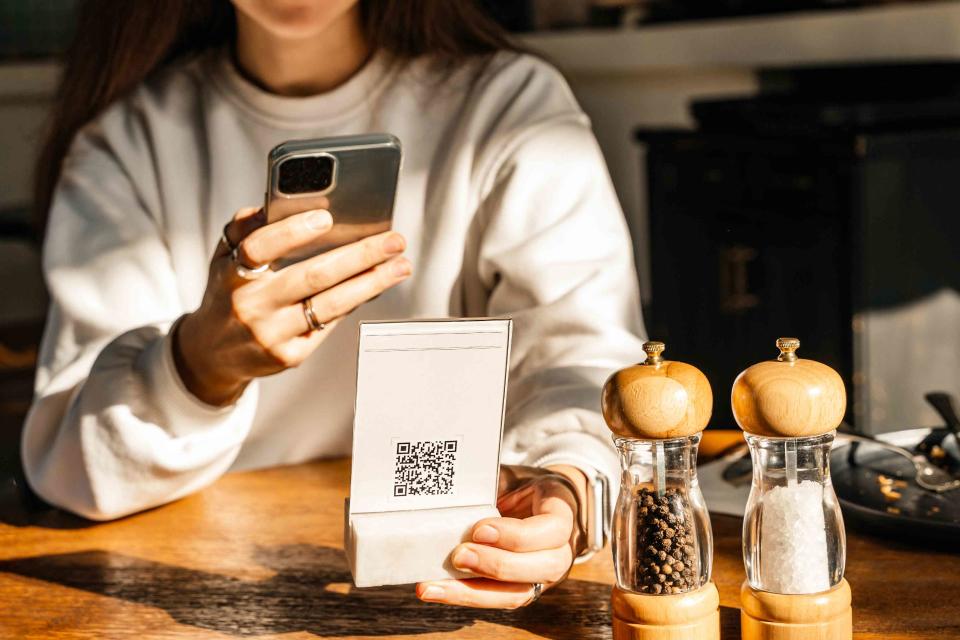An Influencer Ended Up With $60,000 of Shrimp and Squid at Lunch, and It's Kind of Her Fault
Maybe wait until after the meal to post your photos.

Tatiana Maksimova / Getty Images
It’s probably safe to say that we’re all guilty of posting a mid-meal Instagram, whether it’s sharing a snap of the appetizers on our stories or taking a grid-worthy selfie when the bathroom has impeccable lighting. But a woman in China recently learned the downside of posting to social media before you leave the restaurant — and her situation definitely ensured we’ll double-check what’s in the background before uploading anything from now on.
The woman — who has only been identified by her surname, Wang — was having a meal with friends at a hotpot restaurant in Kunming, a city in southwest China. When everyone’s selections arrived at the table, she posted a photo of the spread on the Chinese social media platform WeChat. What she didn’t notice was that she’d included the QR code on her table, which the restaurant’s customers use to place their orders.
Even though the photo was only shared with her WeChat friends list and not the entire social network, someone — or a lot of someones — used that QR code to add a ridiculous amount of food to her order. Wang was absolutely shocked to learn that “her” meal soon included 1,850 orders of duck blood, 2,580 orders of squid, and an absolutely bonkers 9,990 orders of shrimp paste. According to the South China Morning Post, Wang didn’t know what she’d accidentally done until a member of the restaurant’s staff stopped by her table to confirm her CN¥430,000 ($60,400) order.
Related: The 40 Food Instagram Accounts You Should Be Following Right Now
Fortunately for Wang (and her credit card balance), the restaurant did not make her pay for all of that food; they just moved her group to another table. That didn’t stop the internet from continuing to add to her original tally, well after she’d deleted the WeChat post.
The Post said that Wang called the entire situation “a learning experience” and hoped others could use this situation as a cautionary tale to be more careful when sharing snaps online. China Daily reported that the restaurant has since changed its ordering process, adding a “distance limit” for orders using the tabletop QR codes to prevent a similar situation from happening again.
This isn’t the first time this has happened to an unsuspecting oversharer. In October, a man in Hong Kong shared a photo of his meal at Genki Sushi to a Facebook group, and because of the QR code visible in his picture, he was presented with a bill for HK $10,128 ($1,300) for the food that “he” supposedly ordered. (The restaurant was understanding about what happened and let him off the hook for everything that wasn’t already on his plate.)
China Daily additionally reported, it is “commonplace” in China for restaurant customers to use QR codes to both order and pay for their meals — and in many situations, diners have to follow the restaurant’s page on WeChat before they can order the first item. QR code ordering is becoming an increasingly regular thing in the U.S. as well; CNBC reports that the point-of-sale platform Toast gives restaurants those capabilities. “This allows restaurants who have less staff to run more efficiently – something our customers are finding integral to their operations as restaurants across the country are facing staff shortages,” Toast CEO Chris Comparato told the outlet in 2021.
So the next time you take your phone out to grab a quick pre-dinner snap, check the table to make sure you’re not giving the internet a little too much information. Otherwise, you’re the one who might be explaining that, no, you’re not the one who asked for 9,900 orders of shrimp paste.
For more Food & Wine news, make sure to sign up for our newsletter!
Read the original article on Food & Wine.

